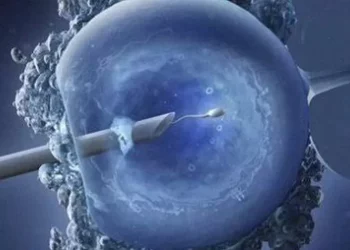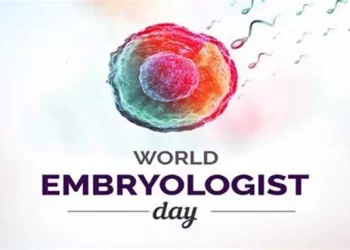Fibroids, also known as uterine leiomyomas, are non-cancerous growths that develop in or on the uterus. They are common among women of reproductive age. Though fibroids are often asymptomatic, they can sometimes cause significant health issues, including infertility. One question that arises in the context of infertility is whether fibroids can cause blocked fallopian tubes. This article will explore the relationship between fibroids and blocked fallopian tubes, detailing how fibroids develop, their symptoms, their potential impact on the fallopian tubes, and the implications for fertility. We will also discuss diagnostic approaches and treatment options for women with fibroids who are trying to conceive.
See Also: 4 Possible Effects of Extrauterine Fibroids on Infertility
What Are Fibroids?
Fibroids are benign tumors that originate from the muscle layer of the uterus, known as the myometrium. They vary in size, number, and location within the uterus. Fibroids can be classified into several types based on their location:
- Intramural fibroids: These develop within the muscular wall of the uterus.
- Submucosal fibroids: These protrude into the uterine cavity.
- Subserosal fibroids: These extend to the outside of the uterus.
- Pedunculated fibroids: These are attached to the uterus by a thin stalk.
Fibroids are most commonly found during the reproductive years, with the highest prevalence in women in their 30s and 40s. While the exact cause of fibroids is unknown, several risk factors are associated with their development, including genetics, hormonal imbalances, and lifestyle factors.
Symptoms of Fibroids
Many women with fibroids experience no symptoms and may not even be aware they have them. When symptoms do occur, they can vary widely based on the size, location, and number of fibroids. Common symptoms include:
- Heavy menstrual bleeding
- Prolonged menstrual periods
- Pelvic pain or pressure
- Frequent urination
- Difficulty emptying the bladder
- Constipation
- Backache or leg pains
In some cases, fibroids can interfere with fertility and pregnancy. This interference can occur through various mechanisms, one of which is the potential blockage of the fallopian tubes.
Understanding the Fallopian Tubes
The fallopian tubes are vital structures in female reproductive anatomy. They connect the ovaries to the uterus and are the pathways through which eggs travel from the ovaries to the uterus. Fertilization typically occurs within the fallopian tubes when a sperm meets an egg. The fertilized egg then travels down the tube to implant in the uterus.
Blockage or damage to the fallopian tubes can prevent the egg and sperm from meeting, thus leading to infertility. Several factors can cause blocked fallopian tubes, including infections, endometriosis, scar tissue from surgery, and, potentially, fibroids.
How Fibroids Can Affect the Fallopian Tubes
Fibroids can impact the fallopian tubes in several ways, potentially leading to blockage and contributing to infertility.
Physical Blockage
Subserosal or pedunculated fibroids that grow on the outer surface of the uterus can sometimes become large enough to impinge upon or compress the fallopian tubes. This physical pressure can narrow or block the tubes, preventing the egg and sperm from meeting. In some cases, even intramural fibroids, if they grow towards the outer edges of the uterus, can exert pressure on adjacent structures, including the fallopian tubes.
Altered Uterine Anatomy
Large fibroids can distort the normal shape and size of the uterus. This distortion can alter the positioning of the fallopian tubes, making it more difficult for the egg to reach the tube or for sperm to travel through the tubes. Such anatomical changes can result in partial or complete blockage of the tubes.
Inflammation and Adhesions
Fibroids can cause inflammation within the uterine environment. Chronic inflammation can lead to the formation of adhesions, which are bands of scar tissue that can bind organs together. If adhesions form around the fallopian tubes, they can obstruct the tubes, preventing the egg and sperm from meeting.
Impact on Tubal Function
Even if fibroids do not cause a complete blockage, they can still impact the function of the fallopian tubes. For example, fibroids can affect the motility of the fallopian tubes, disrupting the normal transport of eggs and sperm. This dysfunction can reduce the likelihood of fertilization.
Diagnosing Blocked Fallopian Tubes Due to Fibroids
Determining whether fibroids are causing blocked fallopian tubes requires a thorough diagnostic evaluation. Several diagnostic tools and techniques are used to assess the presence and impact of fibroids on the fallopian tubes.
Ultrasound
Transvaginal ultrasound is a common first-line imaging technique used to visualize fibroids. It provides detailed images of the uterus and can help determine the size, number, and location of fibroids. However, while ultrasound is useful for identifying fibroids, it may not always clearly show their impact on the fallopian tubes.
Hysterosalpingography (HSG)
Hysterosalpingography is a specialized X-ray procedure used to evaluate the shape and patency (openness) of the fallopian tubes. During an HSG, a contrast dye is injected into the uterus and fallopian tubes, and X-ray images are taken. This procedure can help identify blockages within the tubes and assess whether fibroids are contributing to the obstruction.
Magnetic Resonance Imaging (MRI)
MRI is another imaging modality that provides detailed images of the pelvic organs. It is particularly useful for assessing the relationship between fibroids and surrounding structures, including the fallopian tubes. MRI can help determine if fibroids are exerting pressure on the tubes or causing anatomical distortions.
Laparoscopy
Laparoscopy is a minimally invasive surgical procedure that allows direct visualization of the pelvic organs. During laparoscopy, a thin, lighted tube called a laparoscope is inserted through a small incision in the abdomen. This procedure provides a comprehensive view of the uterus, fallopian tubes, and ovaries, allowing for the identification of fibroids, adhesions, and other potential causes of tubal blockage.
Impact of Blocked Fallopian Tubes on Fertility
Blocked fallopian tubes can significantly impact a woman’s fertility. When the tubes are blocked, the egg cannot travel from the ovary to the uterus, and sperm cannot reach the egg for fertilization. This blockage can result in infertility or reduce the chances of natural conception.
Infertility
Infertility is defined as the inability to conceive after one year of regular, unprotected intercourse. Blocked fallopian tubes are a common cause of infertility, accounting for approximately 25-30% of female infertility cases. When fibroids contribute to blocked fallopian tubes, the likelihood of natural conception is significantly reduced.
Ectopic Pregnancy
In some cases, partially blocked fallopian tubes can lead to an ectopic pregnancy. An ectopic pregnancy occurs when a fertilized egg implants outside the uterus, most commonly in the fallopian tube. Ectopic pregnancies are medical emergencies that require immediate treatment to prevent serious complications.
Treatment Options for Blocked Fallopian Tubes Due to Fibroids
Several treatment options are available for women with blocked fallopian tubes caused by fibroids. The choice of treatment depends on various factors, including the size and location of the fibroids, the extent of tubal blockage, and the woman’s overall health and fertility goals.
Medications
While medications cannot remove fibroids, they can help manage symptoms and reduce the size of fibroids in some cases. Medications such as gonadotropin-releasing hormone (GnRH) agonists can shrink fibroids temporarily, potentially improving the chances of natural conception. However, the effects of these medications are often temporary, and fibroids may regrow once the treatment is stopped.
Surgical Treatments
Several surgical options are available for removing fibroids and potentially improving fertility. The choice of surgery depends on the size, number, and location of the fibroids, as well as the woman’s fertility goals.
Myomectomy
Myomectomy is a surgical procedure that involves the removal of fibroids while preserving the uterus. It can be performed using different techniques, including open surgery (laparotomy), minimally invasive surgery (laparoscopy), or hysteroscopy (for submucosal fibroids). Myomectomy can help improve fertility by removing fibroids that are causing blockages or anatomical distortions.
Hysteroscopic Surgery
Hysteroscopic surgery is a minimally invasive procedure used to remove submucosal fibroids that protrude into the uterine cavity. During hysteroscopy, a thin, lighted instrument called a hysteroscope is inserted through the vagina and cervix into the uterus. This procedure allows for the precise removal of submucosal fibroids, which can help improve fertility and reduce symptoms.
Laparoscopic Surgery
Laparoscopic surgery is a minimally invasive procedure used to remove fibroids on the outer surface of the uterus (subserosal) or within the uterine wall (intramural). During laparoscopy, small incisions are made in the abdomen, and a laparoscope is inserted to visualize and remove the fibroids. This technique can help restore normal anatomy and improve fertility.
Tubal Surgery
In cases where adhesions or scar tissue are causing tubal blockages, tubal surgery may be performed to remove the obstructions and restore tubal patency. Tubal surgery can be performed using laparoscopy or open surgery, depending on the extent of the blockage and the woman’s overall health.
Assisted Reproductive Technologies (ART)
For women with blocked fallopian tubes due to fibroids, assisted reproductive technologies (ART) such as in vitro fertilization (IVF)
can offer a viable solution for achieving pregnancy. IVF bypasses the fallopian tubes entirely by retrieving eggs directly from the ovaries, fertilizing them with sperm in a laboratory, and then transferring the resulting embryos into the uterus. Here are some key aspects of IVF and other ART options for women with fibroids and blocked fallopian tubes:
In Vitro Fertilization (IVF)
IVF is one of the most commonly used ART methods for women with tubal factor infertility, including those caused by fibroids. The process involves several steps:
- Ovarian Stimulation: Hormonal medications are administered to stimulate the ovaries to produce multiple eggs.
- Egg Retrieval: Eggs are collected from the ovaries using a needle guided by ultrasound.
- Fertilization: The retrieved eggs are fertilized with sperm in a laboratory to create embryos.
- Embryo Transfer: One or more embryos are transferred into the uterus, bypassing the fallopian tubes.
IVF offers a high success rate for women with blocked fallopian tubes, making it a valuable option for those affected by fibroids.
Intracytoplasmic Sperm Injection (ICSI)
ICSI is a specialized form of IVF where a single sperm is injected directly into an egg to facilitate fertilization. This technique is particularly useful for couples with male factor infertility or when previous IVF attempts have not resulted in successful fertilization.
Preimplantation Genetic Testing (PGT)
PGT involves screening embryos for genetic abnormalities before they are transferred to the uterus. This can increase the chances of a successful pregnancy and reduce the risk of miscarriage. PGT may be recommended for women with a history of recurrent pregnancy loss or genetic disorders.
Frozen Embryo Transfer (FET)
FET involves freezing embryos created during an IVF cycle for future use. This allows for flexibility in timing and can increase the overall chances of achieving a successful pregnancy. FET can be particularly beneficial for women who need to undergo additional treatment for fibroids before attempting pregnancy.
Preventive Measures and Lifestyle Modifications
While the exact cause of fibroids remains unclear, certain lifestyle modifications may help reduce the risk of developing fibroids or alleviate symptoms. Here are some preventive measures and lifestyle changes that can benefit women with fibroids:
Maintain a Healthy Weight
Obesity is associated with an increased risk of developing fibroids. Maintaining a healthy weight through a balanced diet and regular exercise can help reduce the risk and improve overall reproductive health.
Dietary Considerations
A diet rich in fruits, vegetables, and whole grains, and low in red meat and processed foods, may help reduce the risk of fibroids. Some studies suggest that a diet high in green vegetables and low in high-glycemic-index foods may be beneficial.
Regular Exercise
Regular physical activity can help maintain a healthy weight, reduce stress, and improve overall well-being. Exercise may also help alleviate some symptoms of fibroids, such as pelvic pain and heavy menstrual bleeding.
Manage Stress
Chronic stress can impact hormonal balance and overall health. Techniques such as yoga, meditation, and mindfulness can help manage stress and improve reproductive health.
Avoid Hormonal Disruptors
Exposure to certain environmental chemicals, such as endocrine-disrupting chemicals found in some plastics and personal care products, may influence the development of fibroids. Minimizing exposure to these chemicals can be beneficial.
Regular Medical Check-Ups
Regular gynecological check-ups can help detect fibroids early and monitor their growth. Early detection allows for timely intervention and management, potentially reducing the risk of complications.
The Role of Hormones in Fibroid Development
Hormonal imbalances, particularly involving estrogen and progesterone, play a significant role in the development and growth of fibroids. Understanding the hormonal influences on fibroids can provide insights into potential treatments and preventive strategies.
Estrogen
Estrogen is a key hormone involved in the growth and maintenance of the uterine lining. It promotes the growth of fibroids by stimulating the proliferation of uterine muscle cells. Women with higher levels of estrogen, such as those who are obese or have high body fat, are at increased risk of developing fibroids.
Progesterone
Progesterone also influences fibroid growth by promoting the proliferation of uterine muscle cells. However, its effects are more complex and less well-understood compared to estrogen. Progesterone can both stimulate and inhibit fibroid growth, depending on various factors.
Hormonal Treatments
Hormonal treatments aim to regulate the hormonal imbalances that contribute to fibroid growth. These treatments can help manage symptoms and reduce the size of fibroids. Common hormonal treatments include:
- GnRH Agonists: These medications reduce estrogen levels, leading to a temporary shrinkage of fibroids.
- Progestin-Releasing Intrauterine Device (IUD): This IUD releases a small amount of progestin, which can help reduce heavy menstrual bleeding and fibroid-related symptoms.
- Oral Contraceptives: Birth control pills can help regulate menstrual cycles and reduce heavy bleeding.
Research and Future Directions
Ongoing research aims to improve our understanding of fibroids and develop more effective treatments. Advances in imaging, genetics, and molecular biology are contributing to a better understanding of fibroid development and potential therapeutic targets. Here are some areas of active research:
Genetic and Molecular Studies
Research into the genetic and molecular basis of fibroids is uncovering potential targets for new treatments. Studies have identified specific genetic mutations and signaling pathways involved in fibroid growth, which may lead to the development of targeted therapies.
Non-Surgical Treatments
Researchers are exploring non-surgical treatments for fibroids that offer effective symptom relief without the need for invasive procedures. These treatments include focused ultrasound, radiofrequency ablation, and new hormonal therapies.
Fertility Preservation
For women with fibroids who wish to preserve their fertility, research is focusing on techniques to remove fibroids while minimizing damage to the uterus. Advances in minimally invasive surgery and tissue-sparing techniques hold promise for improving fertility outcomes.
Patient-Centered Approaches
A growing emphasis on patient-centered care is shaping the development of personalized treatment plans for women with fibroids. This approach takes into account individual preferences, fertility goals, and overall health, ensuring that each woman receives the most appropriate and effective care.
Conclusion
Fibroids can indeed cause blocked fallopian tubes, contributing to infertility in affected women. The relationship between fibroids and tubal blockage involves various mechanisms, including physical compression, anatomical distortions, inflammation, and adhesions. Diagnosing and treating blocked fallopian tubes due to fibroids requires a comprehensive approach that includes imaging studies, surgical interventions, and assisted reproductive technologies.
Women with fibroids who are trying to conceive should work closely with their healthcare providers to develop a personalized treatment plan that addresses their specific needs and fertility goals. While managing fibroids can be challenging, advances in medical research and treatment options offer hope for improved outcomes and successful pregnancies.
Understanding the impact of fibroids on reproductive health and taking proactive steps to manage and treat fibroids can help women achieve their desired fertility outcomes and maintain overall well-being. Through continued research and patient-centered care, we can better address the challenges posed by fibroids and support women in their journey to motherhood.
Related Links:



























